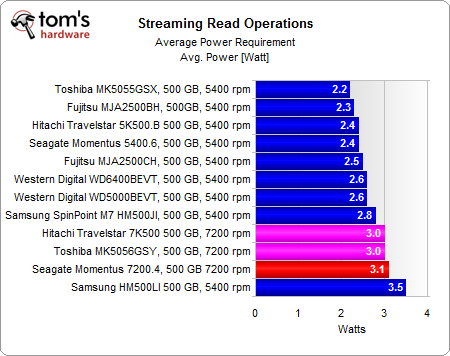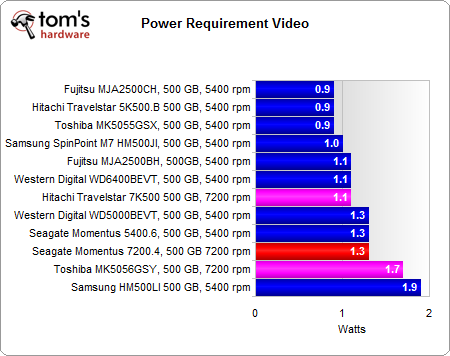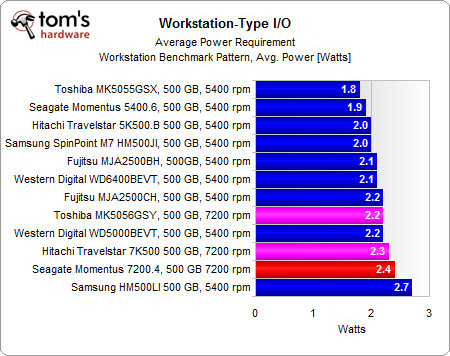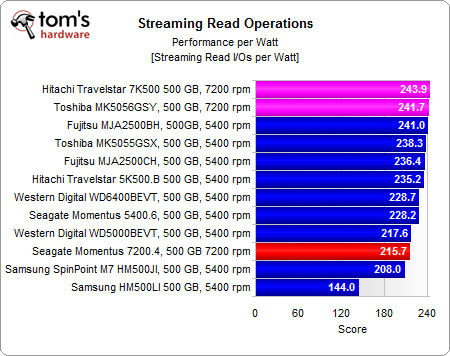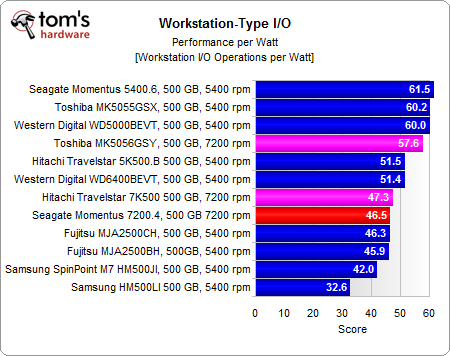Reviewed: 2.5" Notebook Hard Drives From Toshiba And Hitachi
With more than 100 MB/s throughput and 500GB of storage capacity for notebooks, Hitachi’s Travelstar 7K500 and the Toshiba MK5056GSY face the established Seagate Momentus 7200.4. Were the two newer drives worth waiting for? We benchmark them to find out.
Benchmark Results: Power Consumption And Efficiency
We tested power requirements at idle, at maximum streaming, at HD video streaming, and at workstation I/O operation.
Idle power does not differ very much. Generally, 5,400 RPM drives require between 0.7W and 1.0W in active idle, which means that the drive has to remain spinning. Measuring standby power consumption doesn’t really make a lot of sense, as most drives are well below 0.2W or even 0.1W, leaving no noticeable difference, even after hours of notebook standby.
If you want maximum throughput, then the 7,200 RPM drives will require half of a watt more than the 5,400 RPM mainstream drive. All three candidates required around 3.0W in this test.
We also tracked power consumption for HD video playback off the hard drives. Hitachi’s Travelstar 7K500 consumes as much power (1.1W) as many 5,400 RPM drives. Seagate came in at 1.3W and Toshiba unfortunately requires 1.7W. If you spend hours at a time watching video, such as on an international flight, then this difference will certainly result in many minutes more or less of playback time. Obviously, the notebook, battery, and other applications running in parallel also make a difference.
Many I/O operations per second result in a 2.2W to 2.4W power requirement.
Power Efficiency
If we divide streaming performance (using I/O operations per second) by power consumption in watts, we receive an efficiency score. The two new drives do best here. Seagate is a bit behind since the Momentus 7200.4 requires more power while delivering less throughput.
Get Tom's Hardware's best news and in-depth reviews, straight to your inbox.
Efficiency on workstation-type I/O operations is best on several 5,400 RPM drives, as their I/O performance isn’t much better or worse than on the 7,200 RPM drives, but power consumption is typically lower.
Current page: Benchmark Results: Power Consumption And Efficiency
Prev Page Benchmark Results: Application Performance (PCMark Vantage) Next Page Conclusion
